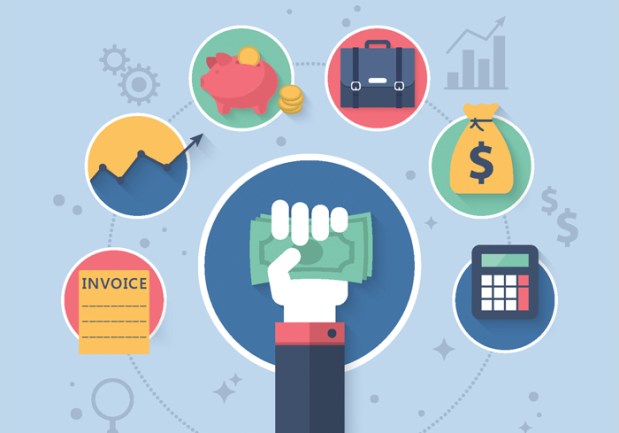When It Comes To eInvoicing, Supplier Education Is Key

It’s no secret that electronic invoicing, or eInvoicing as it is commonly known, can speed up the B2B payments process and keep data secure at the same time. So why hasn’t the technology caught on?
In a recent whitepaper underwritten by Corcentric and with research conducted by PayStream Advisors, the key issues — hesitation hinges on technology, costs and plain, old knowledge — are all ones that Corcentric believes are addressable.
First, a quick primer on eInvoicing is in order. An eInvoice is, well, an invoice but one that is delivered electronically from one party in a transaction to another — typically from a supplier to a buyer in activity that is related to accounts payable.
The document is sent securely across a network and in a standardized format so that data input remains consistent and is easy to format and process. The eInvoice flows from supplier to buyer either through an open business network or as the supplier inputs information into a standardized Web form across a shared portal, and the invoice is then brought into the buyer’s system.
Corcentric notes in the paper that research that stretches back “for years” shows just how advantageous eInvoicing is over traditional paper-based processes, and even business leaders have publicly called for adoption of the technology. But it’s been slow going for suppliers to embrace, and become a part of, eInvoicing networks. And, of course, if suppliers hold back, then so too will buyers themselves. As the old saying goes, it takes two to tango.
According to the PayStream Advisors research, which included a survey of 200 individuals across several industries, many buyers are aware of the benefits of eInvoicing and are at least considering adopting an eInvoicing system. Among the top reasons that they want to make the transition: 54 percent said they want to see a reduction in labor and processing costs; roughly 31 percent said they would welcome fewer lost or missing invoices; and 30 percent said they desire quicker approval cycles.
And yet, most organizations still rely on the paper-based system to get invoices from point A to point B. When asked which formats “most” of their invoices rely upon, respondents claim 50 percent of their invoices are paper-based, with 12 percent coming from email and an additional 12 percent from electronic data interchanges.
Some impediments to widespread eInvoice adoption, the research found, include concerns over network fees tied to the actual technology platforms, and perhaps most importantly, lack of education about just how beneficial the practice may be to the bottom line. To that end, the whitepaper offers up a few recommendations for alternatives to paper-based invoices. Among those alternatives are:
OCR Data Capture: In-House Scanners: Optical Charter Recognition (OCR) uses technology to convert scanned images or text to a document format that is able to be stored in a company’s system or online mailbox. Corcentric advocates this system as a useful alternative to eInvoice for companies with a significant amount of paper-based invoices but not enough clout with suppliers to transition wholesale to an eInvoice platform.
OCR Data Capture: Email Extraction (PDFs): In this case, according to the research, suppliers are increasingly sending their invoices as PDFs or including invoices in their accrual emails. Companies can push those emails to online mailboxes that have the ability to actually extract data from the attachment or from the email. This methodology, posits the whitepaper, can be “almost as effective as eInvoicing,” and suppliers may be relatively more comfortable with OCR Data Capture than they might be with registering to send data over a network.
OCR Data Capture: Mailroom Services: In another scenario, paper invoices can be sent to an invoice processing center, or digital mailroom, where invoices can be manually opened and scanned into a system. This solution helps mitigate the impact (in terms of costs and otherwise) that stems from a supplier network that insists on paper-based methods.
Proffering other examples, a supplier can upload an invoice through an online portal directly to the Internet. The fact that data-extracting technology must still be employed is a key differentiator from Web-based eInvoicing.
In terms of education, PayStream’s findings show that only 22 percent of enterprises use an eInvoicing solution currently, with OCR technology used by only 21 percent of companies. The fact that only one-third of companies are planning on using an eInvoicing solution exhibits that the great majority of companies don’t have any near-term blueprint aimed at such adoption, laying bare a significant greenfield opportunity.
Some of the top reasons keeping suppliers from adoption eInvoicing are in fact readily dismantled. For example, the longstanding hesitation over network fees may be rendered moot as, PayStream notes, the eInvoicing market is moving away from fee-based networks to B2B networks that are actually free for suppliers.
The cloud is also making it cheaper to move to eInvoicing, which would take care of suppliers’ fears that complicated connectivity demands would make IT expenses prohibitive.
Offering pointers to help speed supplier eInvoice adoption, the whitepaper recommends an approach wherein all suppliers are included in an adoption push to automated technology, which is increasingly important as B2B becomes ever more global in scope. And given the diverse mix of suppliers that a buyer may have, it’s wise to implement a diverse mix of invoice receipt options. It also pays to join networks that can be considered “supplier-centric,” with options that, for example, change discount rates based on the number of days an invoice is paid early — a practice that improves cash flow for the supplier.
